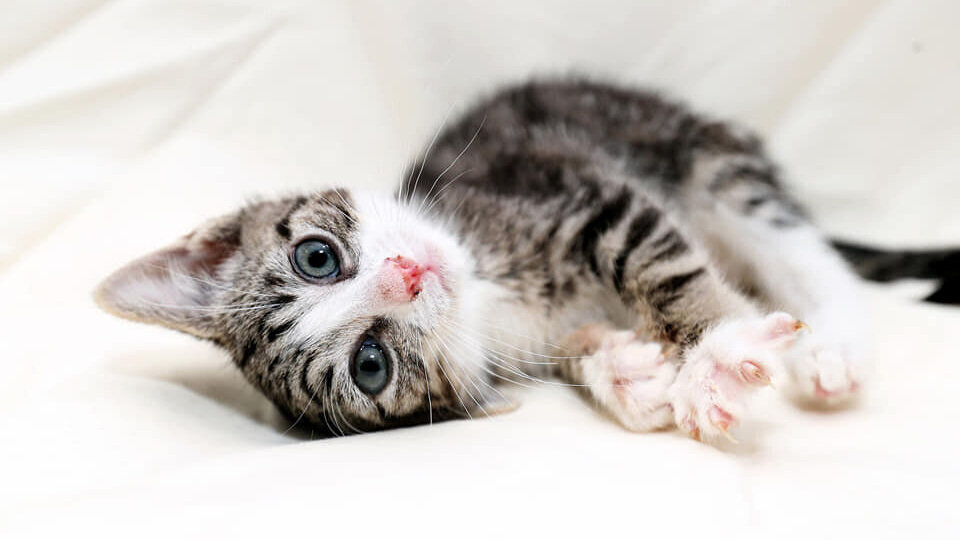Make 2021 the year that you commit to kindness for all animals. Here are 21 things you can do to help animals, big and small, this coming year, from actions to help those in your own family to owning our individual impact on wildlife and industrialized animal cruelty.
1. Adopt.
If you are in a place to add a new furry family member, look to your local shelters and rescues to adopt a homeless animal. Life circumstances bring amazing companion animals to the shelter every day, where they are cared for, rehabilitated (if needed), and provided with necessary preventative medical needs. Shelters and rescues work with interested adopters to find the perfect fit of a companion, and these pets get the second chance they deserve. See who’s currently looking for a home and find out how to welcome your newest family member at HRA and St. Hubert’s.
2. Make sure your pet has identification and encourage others to do the same
In case the unforeseen happens and your pet gets lost, make sure they have a collar and identification tags. Also, have your pet microchipped and keep your address and phone number up-to-date to help get your pet back home quickly and safely.
3. Foster
Foster parents fulfill a critical component of a shelter or rescue’s life-saving work. On any given day, our fosters double the number of animals we can rescue at HRA and they give an animal the best possible place to wait to find a loving home. You don’t need to have previous animal experience to become a foster, just a love of animals and a willingness to learn. Learn more about our fostering programs at HRA and St. Hubert’s Animal Welfare Center.
4. Make a disaster plan for your pet
It is important to have a plan in place for all members of your household to respond to any emergency, whether it is a natural disaster or a serious illness. Leaving a pet behind in a disaster can result in their becoming lost, injured or even killed. Avoid these terrible possibilities by having a plan in place and check out HRA’s tips to create your plan and emergency pet kit.
5. Volunteer at a shelter
Volunteers are an essential part of the successful functioning of an animal shelter. An active volunteer force makes it possible for us to save 100,000 animals every year across our DC and New Jersey campuses. Volunteers provide a variety of essential services like training and caring for dogs, cats and/or small mammals, taking adoptable dogs for a run at local parks, helping animals find their forever homes, and supporting community and special events. To become a part of the team, explore volunteer opportunities at HRA and St. Hubert’s.
6. Help make a shelter or rescues wishes come true
Animal shelters and rescues rely on the community to donate everyday supplies to support their daily operations. Like most animal shelters, HRA and St. Hubert’s provide wish lists of the donations that are most needed at the facility. Find your local shelter’s wish list and help them get needed supplies by collecting items or having them sent directly from an online retailer.
7. Help the community cats in your neighborhood through trap-neuter-return (TNR)
TNR is the practice of humanely trapping, sterilizing & vaccinating, and returning community cats to their outdoor homes in order to help reduce the euthanasia of unowned cats, eliminate reproduction in sterilized cats, and keep cats healthy by providing vaccines. HRA’s community cat program addresses the needs of the unowned, community cats who live outdoors in the District and supports members of the public who care for and coexist with them. Through partnerships with local veterinarians, St. Hubert’s also subsidizes low-cost spay/neuter surgeries for community cats and operates its Barn Buddies program to find appropriate homes for cats who aren’t suited for life inside a home.
8. Make a shelter pet’s day by creating enrichment toys
Toys are a great way for pets awaiting adoption at the shelter to have fun and keep their minds occupied. A few easy examples of toys that can be made using items commonly found at home can be found on HRA’s website.
9. Plan your garden with wildlife in mind by planting native pollinator and bird friendly plants
Flowers like sunflowers are a great multipurpose plant that pollinators love when flowering and many birds enjoy the seeds. Avoid the use of pesticides when gardening, too.
10. Make your outdoor space a respite for wildlife with small changes like putting out fresh water
All animals need water, and it can sometimes be difficult, particularly for urban and suburban wildlife, to find places to quench their thirst. Many more ideas of how to make your outdoor space welcoming to wildlife can be found in the book "The Humane Gardener: Nurturing a Backyard Habitat for Wildlife." by Nancy Lawson.
11. Opt for humane options to avoid lethal rodent control methods, like rodenticide and cruel glue traps
Glue traps are a particularly cruel form of trap that cause animals caught to die from starvation and dehydration after being stuck. For impormation on humane rodent control options and prevention and deterrence techniques, visit www.hsi.org/news-media/humane-rodent-solutions/.
12. Avoid the use of products like unnecessary single use plastics and help to clean up community litter
Pollutants like plastic bags and straws that find their way into natural habitats and bodies of water frequently injure and kill wildlife and marine life that ingest and become entangled with them. Look for opportunities to swap these items for reusable and sustainable products.
13. Support local businesses that share your animal welfare values to support
Discover the variety of products and services that animal-friendly businesses in your area provide. As an example, young DC entrepreneur Mahogany Young recently launched a vegan candle business called The Green Things.
14. Choose cosmetics and household items that haven’t been tested on animals
Five hundred thousand mice, rabbits, guinea pigs and rats are killed every year after being used in painful laboratory testing that exposes them to cosmetic ingredients through practices like rubbing chemicals into their skin or eyes to test irritation and force-feeding studies. You can find certified cruelty-free products by looking for the Leaping Bunny logo when you shop for cosmetics.
15. Be chic in fur-free fashion
An increasing number of retailers and designers have pledged to go fur-free in their clothing products as consumers are learning about the cruel treatment of the millions of minks, foxes, rabbits and other animals on fur farms that live in cramped cages for their entire lives before being painfully electrocuted or gassed for their fur. When shopping for fur-free, be wary that unfortunately there have also been documented cases of real animal fur being sold as faux-fur on fur-trimmed products. Resources to create your humane shopping list and guidance on how to ensure a product labelled as faux fur is truly free of animal fur can be found many places online, including www.humanesociety.org/all-our-fights/going-fur-free.
16. Move plants to the center of your plate
Reducing our meat consumption is not only proven to be better for our bodies and the environment, it also helps reduce animal suffering. The vast majority of meat Americans consume comes from animals raised on factory farms, where industry standard practices include unnecessary cruelty like confining chickens to cages so small they cannot spread their wings. At HRA, we have a policy of serving only plant-based meals at our events as part of our mission to create a world where all animals can thrive. There are tons of great plant-based recipes available online, including some alternatives for your favorite animal products.
17. Take a virtual tour of a farm animal sanctuary
Experience the unique personalities of individual pigs, goats, chickens and cows when they are cared for and able to live out their natural instincts and actions with a virtual tour of a farm animal sanctuary. Two phenomenal sanctuaries that offer experiences with rescued farmed animals are Poplar Spring Animal Sanctuary in Poolesville, Maryland and Tamerlaine Sanctuary and Preserve in Montague Township, New Jersey.
18. Commit to learning and thinking more about animal welfare through a virtual book club
You can explore a great variety of writing on specific issues and animals with a group. Some suggested titles include: Among Animals: The Lives of Animals and Humans in Contemporary Short Fiction; The Secret Lives of Bats: My Adventures with the World's Most Misunderstood Mammals; Why Animal Suffering Matters: Philosophy, Theology, and Practical Ethics ; Next of Kin: My Conversations with Chimpanzees
19. Help a young mind develop compassion and kindness toward animals
Make sharing examples of kindness toward animals a part of your conversations with the children in your life. You can find great reading recommendations for all ages on HRA’s Animal Academy, plus projects and educational resources designed for animal-loving youth on St. Hubert’s website.
20. Work for the passage of animal protection legislation
As the enforcement agency for DC’s animal laws, HRA has the unique perspective of seeing the law’s deficiencies and needed updates. Sign up to become a member of HRA’s Animal Advocacy Alliance to stay up to date on our work to make needed updates to the District’s animal welfare laws and ensure DC residents have the animal protection they deserve by emailing advocacy@humanerescuealliance.org. In New Jersey, you can email advocacy@sthuberts.org to learn more about our efforts to advocate for animal welfare legislation and to help us protect animals in our state and beyond.
21. Share what you learn and spread the word about animal welfare issues and needs
Share social media posts and requests from HRA and other animal welfare organizations, contribute information to community listservs and websites, and provide animal-related resources to others.







